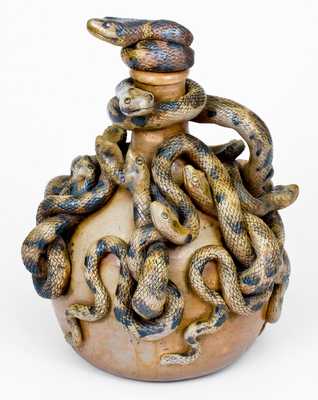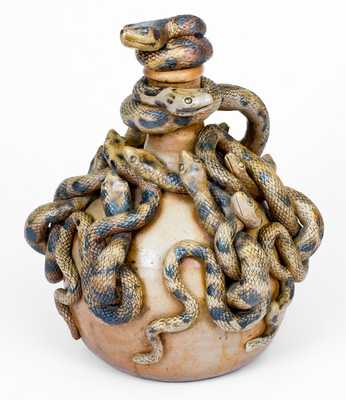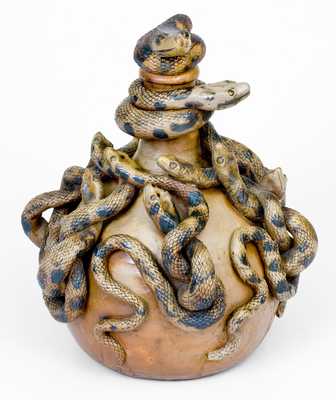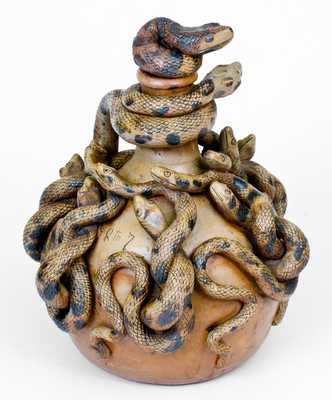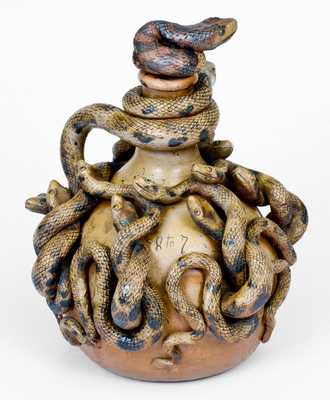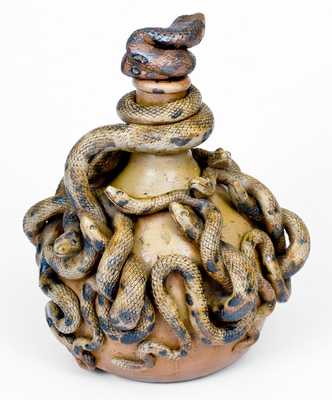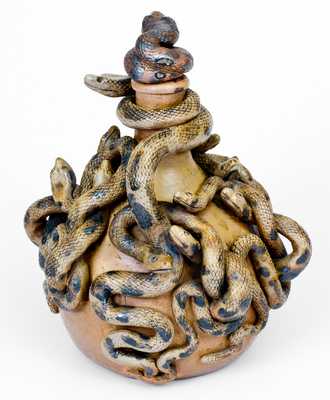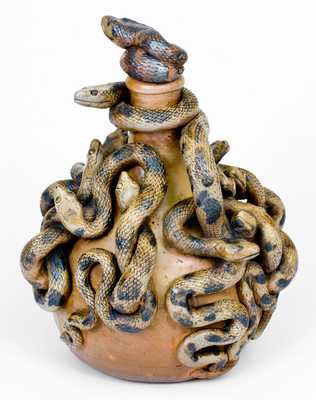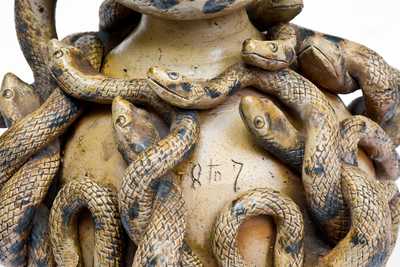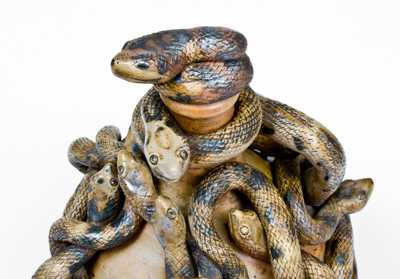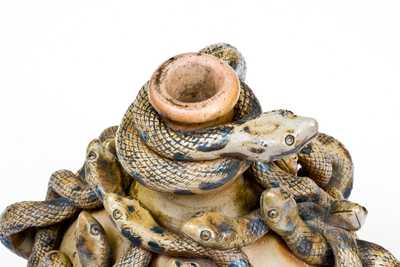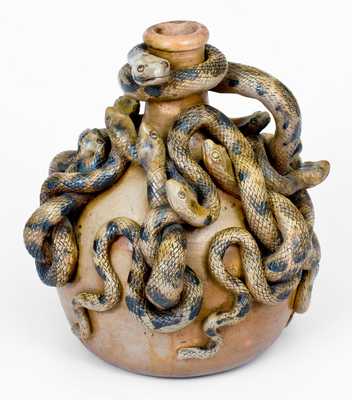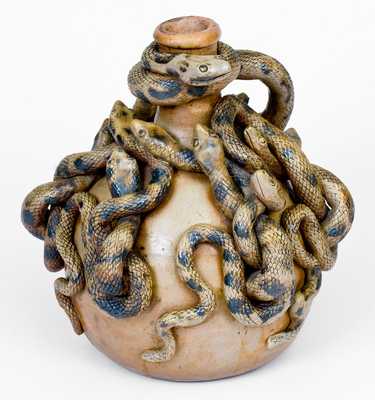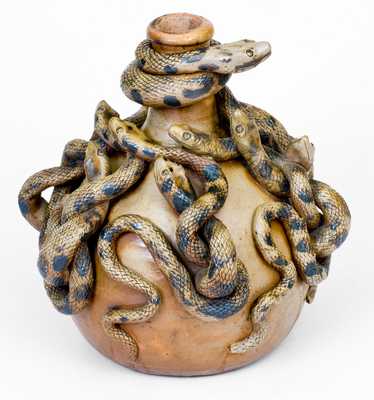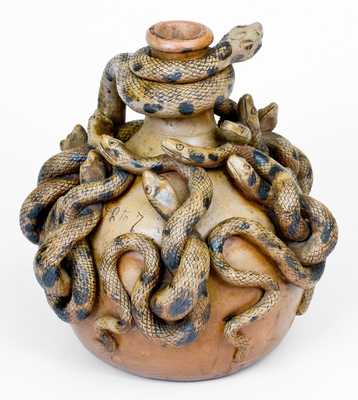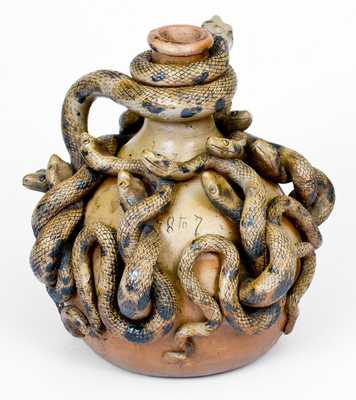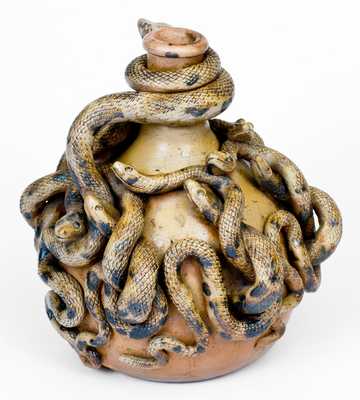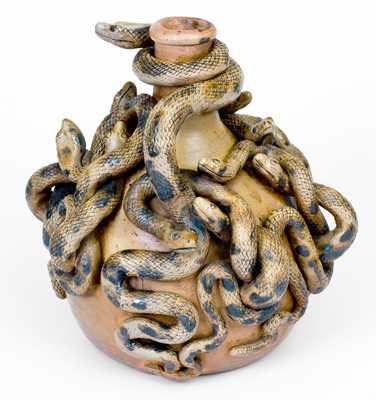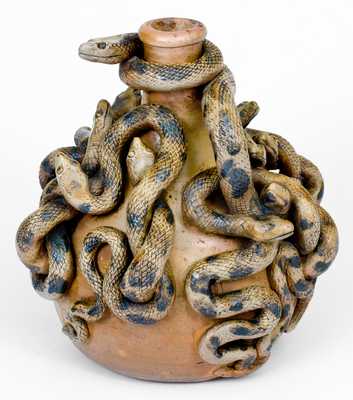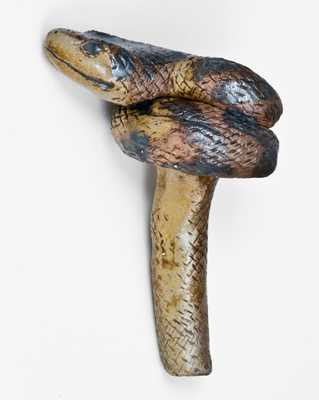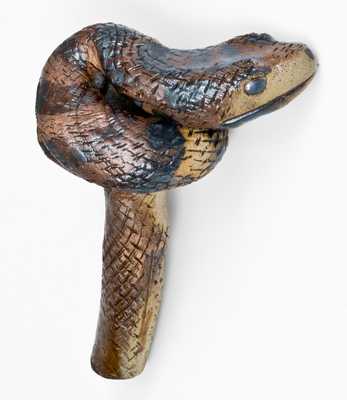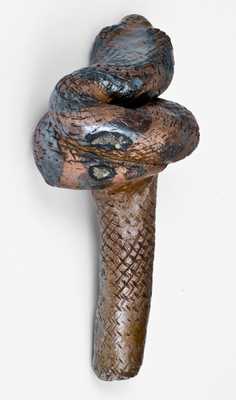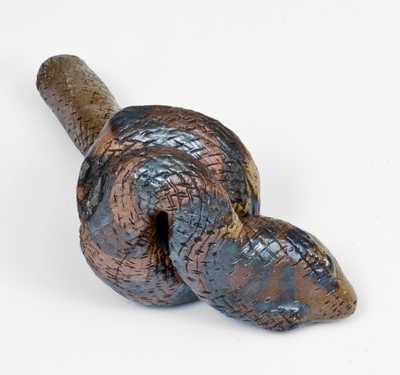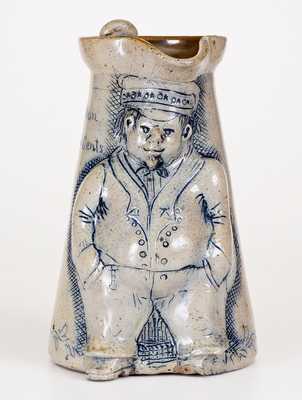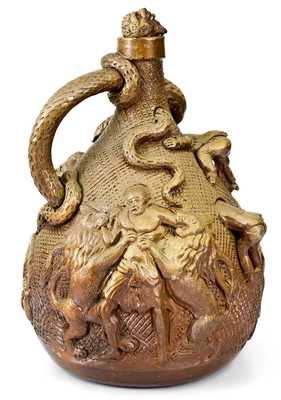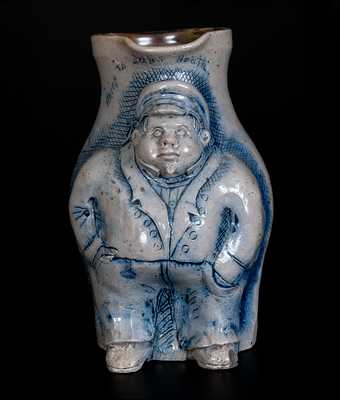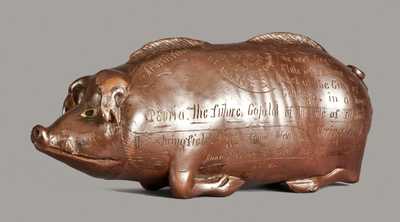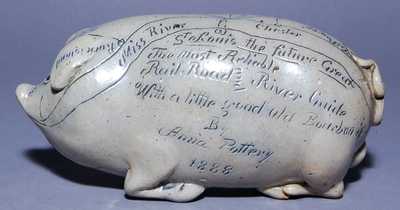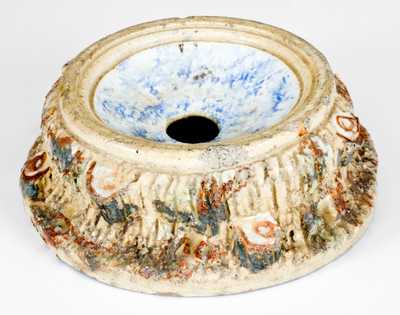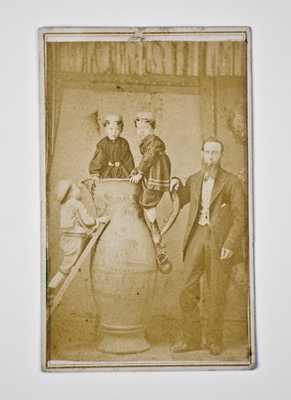Outstanding Salt-Glazed Stoneware Snake Jug with Albany Slip Decoration, Inscribed "8 to 7", Wallace and Cornwall Kirkpatrick, Anna, IL, 1877, ovoid jug with tall neck and semi-rounded rim, the handle in the form of a snake coiled around the jug's neck, the body profusely-decorated with twelve hand-modeled and applied snakes. A pattern emerges when the jug is studied closely, as the potter has applied five snakes emerging around the midsection of the jug, each with a loop-shaped form, and then applied a second group of snakes that entwine their bodies through the first group of snakes. Each snake is hand-incised with crosshatched scaling, and features a flattened, diamond-shaped head with impressed circular eyes and incised mouth. Jug includes its original stopper in the form of a coiled snake with incised scaling to the body and post, impressed circular eyes, and incised mouth. The snakes profusely-decorated with brushed Albany slip splotches throughout their bodies and highlights to the eyes. The stopper is additionally decorated with Albany slip stripes to the body and top and underside of the head, along with highlights to the eyes and mouth. The jug's midsection is incised with the inscription, "8 to 7". The surfaces of the jug and stopper are covered in a clear salt glaze. Combining traditional glazing and firing techniques with the aesthetic of academically-trained art, the snake jugs of the Kirkpatrick brothers have captivated historians, collectors, and ceramic artists for decades. This form represents the pinnacle of the brothers' craft in its sophistication, in terms of both modeling and meaning, assuming an icon status that transcends the stoneware medium. This jug presents a "living" surface to the viewer, designed to generate a response. This sense of realism, uncommon to the American stoneware craft, was inspired, in part, by Wallace Kirkpatrick's own fascination with snakes. He kept his own menagerie of pet snakes that he had collected throughout the country and even displayed them at local fairs. While also being his own, personal subject of interest, Wallace's use of snakes to decorate his ware follows the Biblical symbology of the animal representing evil or man's fallen state. This jug is one of three Anna "8 to 7" jugs made by the Kirkpatrick brothers in the year 1877. (A second resides in a private collection and a third has belonged to the Illinois State Museum since 1991.) The following is a discussion of the historical significance of these Anna masterworks by Richard Mohr in his book, Pottery, Politics, Art: George Ohr and the Brothers Kirkpatrick: "The jugs are bitter commentaries on the presidential election of 1876 in which the Republican candidate, Rutherford B. Hayes (1822-1893), won through unusual means and in part by backsliding from Republican principles. The background in brief: The Democratic candidate, Samuel Tilden, governor of New York, won the popular vote by about a 250,000-ballot margin [an outcome aggressively challenged by supporters of his opponent] ... . To settle the dispute, Congress, with Tilden's blessing set up a high joint commission, which had fifteen members--five from the Senate, five from the House, and five from the Supreme Court ... . So when the high joint commission set to work, the Republicans held a one-seat majority on it. ... Hayes won by a vote of eight to seven, a vote which became a slogan of the times: 'eight villains to seven patriots.' ... The point of the Kirkpatrick presidential election jugs then is fairly clear. They are a general indictment of political chicanery. Politics [in the view of Wallace Kirkpatrick] is viewed [and portrayed] as nothing but a pit of pit vipers." The majority of Anna Pottery snake jugs of this size and detail reside in museum collections. Our November 3rd auction offers the opportunity to acquire a coveted American ceramic form that rarely enters the secondary market. Provenance: The earliest known owner of this jug was a California collector that had acquired the piece sometime in the 1930s; in the late 1970s, an antiques dealer in Oregon (now deceased) purchased it in a California estate sale; in 1977, a woman in Salem, Oregon purchased it from the dealer that had acquired it in California; in July of 1991, the Salem, Oregon collector consigned the jug to David Rago Auctions in Lambertville, NJ; acquired by the consignors from David Rago Auctions, Nov. 10 1991, Lot 2. Literature: Illustrated in Mohr, Pottery, Politics, Art: George Ohr and the Brothers Kirkpatrick, Urbana and Chicago, University of Illinois Press, 2003, color plate 4. Loss to bottom end of stopper. Snake on stopper is original. Professional restoration to head and neck of three snakes, and professional restoration to head of one snake, all located on body of jug. This conservation was completed by Broken Art Restoration in Chicago, IL in 2012, a company that is familiar with the Kirkpatricks' work, having restored several other Anna Pottery pieces, including another "8 to 7" snake jug. In the Broken Art Restoration workshop, the missing snake heads were replaced with heads cast from molds from existing snake heads on this jug. Today, the four professionally-restored parts are almost indistinguishable from the original heads found on the jug. All three of the known "8 to 7" jugs sustained some damage before they were collected. A second was also missing several snakes and was subsequently restored. A third is missing its snake stopper and one of the snake's heads, with an additional reglued snake. H 11" ; W 9 3/4" ; D 8 1/2".

